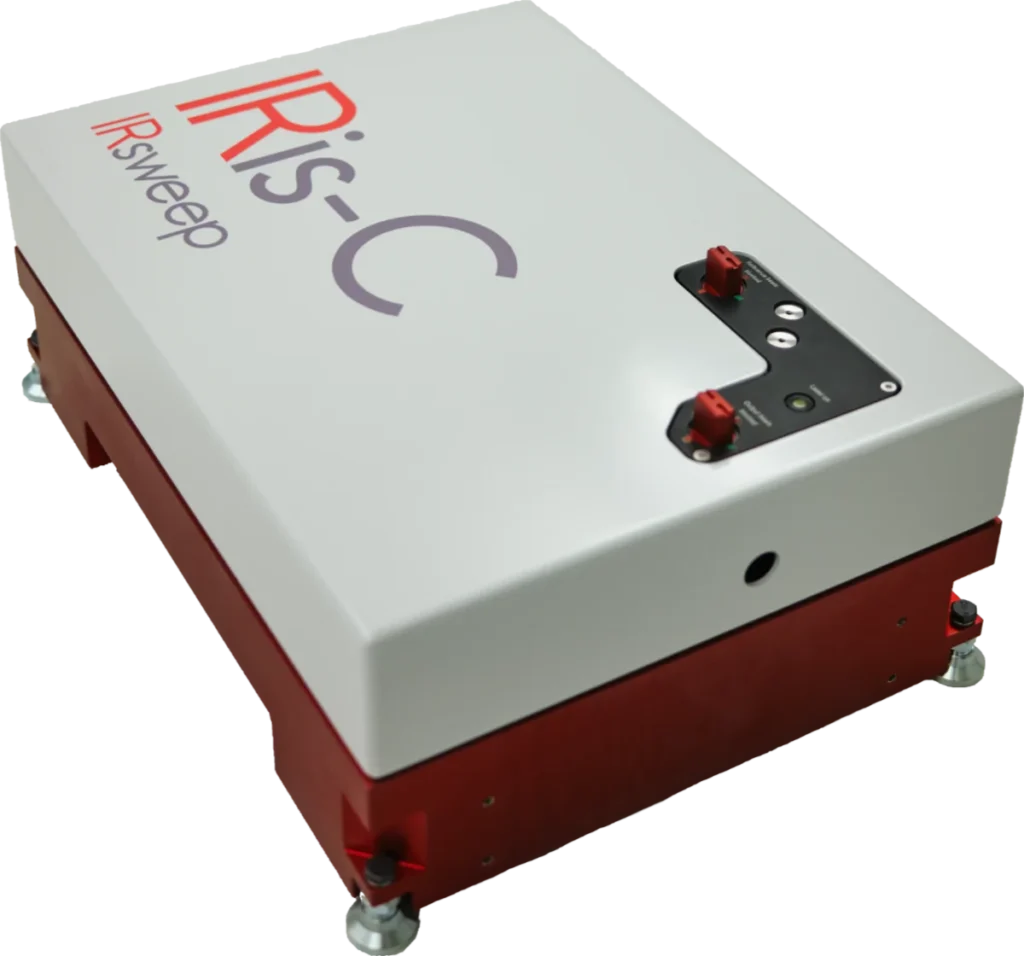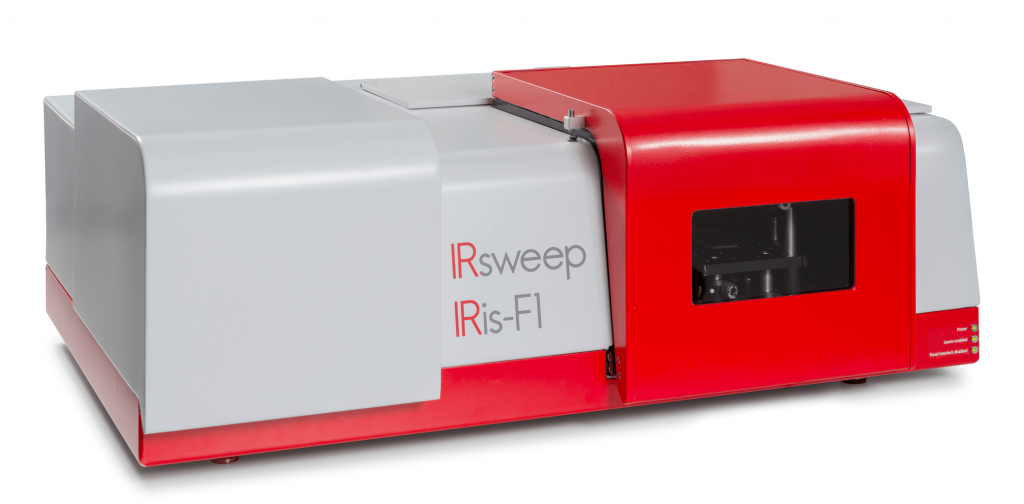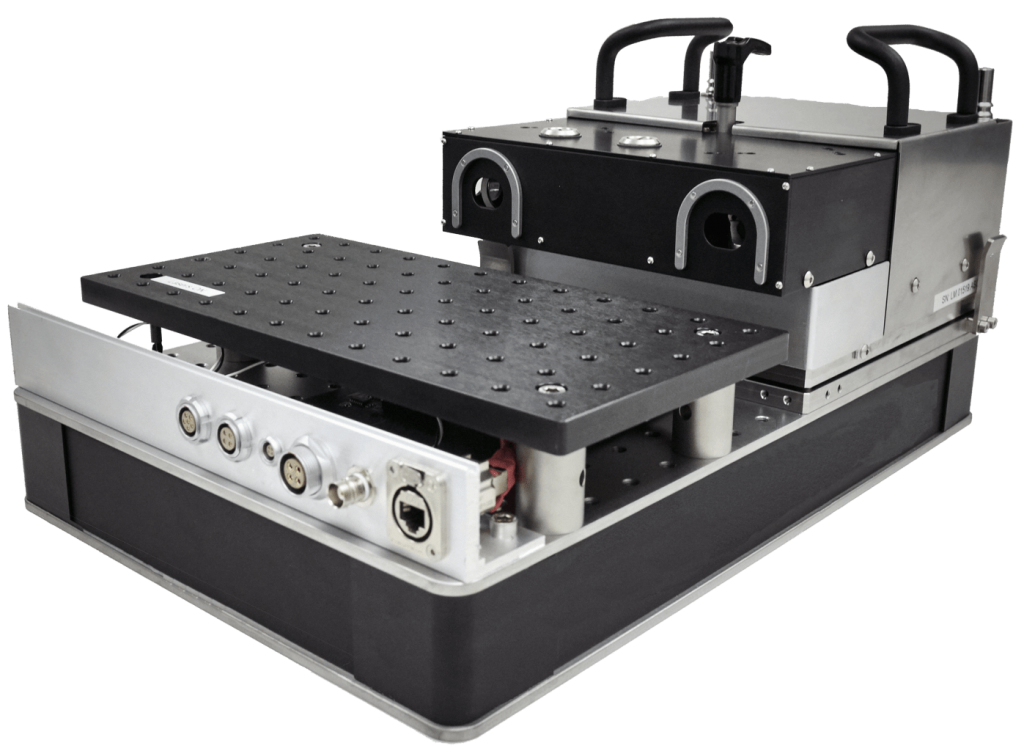Reaction monitoring at small volumes

Minimizing volume in IR spectroscopy is often desirable, to reduce mixing times and enable transmission instead of reflection measurements through the use of thin layers in microfluidics.
Studying reaction kinetics in liquid phase is often done with stopped-flow setups, where starting materials can be rapidly mixed and the reaction can be subsequently observed as a function of time. By using small reaction volumes, mixing times on the order of few milliseconds can be achieved as a result.
Established FTIRs do not offer sufficient time resolution – let alone high signal-to-noise ratio at a given time resolution.
The IRis-F1 overcomes this limitation with signal-to-noise ratios beyond 1000 at integration times of 0.1 ms. This is achieved with high-brightness lasers and the rapid multi-heterodyne detection method.
The high brightness of the laser source can also be exploited by using a transmission configuration instead of an ATR setup or increasing transmission cell thickness.
This avoid the disadvantages of limited sensitivity and the restriction to a sample layer close to the surface that is typical for ATR. Increasing maximum transmission thickness simplifies sample handling (as it avoids clogging) and increases sensitivity.
These advantages can be harvested with existing accessories due to the standard sample interface of the IRis-F1.



